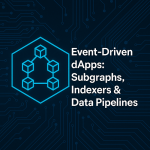Blockchain is one of the most talked-about technologies of the digital age, with its potential to revolutionize industries ranging from finance to healthcare, supply chain management, and beyond. As the underlying technology of Web3, blockchain has the ability to decentralize the internet and reshape how we interact with digital information. But for many, the concept of blockchain can be complex and difficult to understand. Hence, the question is what is blockchain in simple form, so everybody can understand.
In this Beginner’s Guide, we’ll break down the essential elements of blockchain technology in simple terms, explain how it works, and explore its significance in the world of Web3. Whether you’re new to blockchain or looking to get a deeper understanding of its impact, this guide will provide you with the foundational knowledge you need.
What is Blockchain?
blockchain technology is the backbone of crypto
understanding how it works is key
it’s a decentralized, digital ledger that records transactions across a network of computers
it’s like a digital accounting book, but instead of being stored in one place, it’s distributed across…
— Jeremy (@Jeremyybtc) February 20, 2025
At its core, blockchain is, in essence, a decentralized digital ledger that records transactions across a network of computers in a secure and transparent way. To illustrate, think of it as a digital notebook where every transaction, or record, is, in fact, written down in a series of “blocks” and linked together in a chronological order.
The key characteristic of the technology is that it is decentralized, meaning there is no central authority or intermediary (like a bank or government) controlling it. Instead, the ledger is distributed across a network of computers, known as nodes, and each node holds a copy of the entire blockchain. This makes the technology inherently more secure, transparent, and resistant to tampering compared to traditional centralized systems.
Key Characteristics of Blockchain:

- Decentralization: Blockchain operates on a peer-to-peer network, without relying on a central authority.
- Transparency: All transactions are visible to everyone in the network and can be traced back to their origin.
- Immutability: Once data is added to the ledger, it cannot be changed or deleted, ensuring data integrity.
- Security: Blockchain uses cryptographic algorithms to secure data, making it difficult for hackers to manipulate records.
- Consensus Mechanisms: Blockchain uses various mechanisms (such as Proof of Work and Proof of Stake) to verify and validate transactions, ensuring that all participants agree on the state of the ledger.
How Does Blockchain Work?
First, it’s important to understand how blockchain works.
A blockchain functions as a decentralized digital ledger where data is stored in blocks that are linked together in a chain.
This means that US government spending would be FAR more secure if implemented properly. pic.twitter.com/71ZT7NTdvp
— The Kobeissi Letter (@KobeissiLetter) February 9, 2025
Now that you understand the basic idea behind blockchain, let’s dive into how it works. The technology is built on a series of key components:
1. Blocks
Each block in a blockchain contains, specifically, a list of transactions. These transactions could, for example, be anything from cryptocurrency transfers (like Bitcoin or Ethereum) to data records, smart contracts, or even the ownership of digital assets.
Every block has three main components:
- Data: This includes the transaction details, such as who sent the transaction and who received it, and the amount involved.
- Hash: Each block has a unique identifier, called a hash, which is created using a cryptographic algorithm. The hash is like a digital fingerprint for the block, ensuring that it cannot be tampered with.
- Previous Block’s Hash: Every block contains the hash of the previous block, which links the blocks together in a chain. This makes it nearly impossible to alter a block’s data without changing every subsequent block, adding an extra layer of security.
2. Nodes
The blockchain is distributed across a network of computers, called nodes. Each node has a copy of the entire blockchain and is responsible for validating new transactions. Nodes communicate with each other to ensure that the information on the blockchain is consistent across the entire network.
When a new transaction occurs, it is broadcast to the network, and nodes work together to validate it using a consensus mechanism.
3. Consensus Mechanisms
A consensus mechanism is a protocol that ensures all nodes in the network agree on the state of the blockchain. This is crucial in maintaining the integrity of the system, as there is no central authority to oversee the transactions.
Here are the two most common consensus mechanisms:
- Proof of Work (PoW): This is the mechanism, for example, used by Bitcoin. In PoW, miners (specialized computers) compete to solve complex mathematical puzzles. The first one to solve the puzzle, consequently, gets to add a new block to the blockchain and is rewarded with cryptocurrency. However, this process requires a lot of computational power and energy.
- Proof of Stake (PoS): In PoS, validators are chosen based on the amount of cryptocurrency they “stake” or hold in the network. The more tokens a person holds, the higher their chances of being selected to validate a block. PoS is considered more energy-efficient than PoW.
Types of Blockchain
There are three main types of blockchains, each with its own unique characteristics and use cases:

1. Public Blockchains
Public blockchains are, by definition, completely open and decentralized. As a result, anyone can join the network, participate in the consensus process, and access the blockchain’s data. Notably, Bitcoin and Ethereum are, without a doubt, the most well-known examples of public blockchains. Moreover, public blockchains are particularly ideal for applications where transparency and decentralization are essential.
2. Private Blockchains
Private blockchains are, in essence, permissioned networks, meaning that only certain participants can access the ledger and validate transactions. Furthermore, these private types are typically used by businesses that want to use blockchain technology internally, without exposing sensitive information to the public. Private blockchains offer more control over who can participate but sacrifice some of the benefits of decentralization.
3. Consortium Blockchains
Consortium blockchains are a hybrid of public and private blockchains. In a consortium type, multiple organizations or entities share the responsibility of validating transactions. This type of blockchain is often used in industries where multiple parties need to collaborate but still want to maintain control over who can participate.
Blockchain and Web3: The Next Evolution of the Internet
It is crucial for all market participants to understand how Web3 works and how it relates to Blockchain. Web3 refers to the next generation of the internet, built on decentralized technologies like blockchain. While the current internet (often referred to as Web2) is largely centralized, with data controlled by corporations like Google, Facebook, and Amazon, Web3 aims to give users more control over their data, identities, and digital assets.
The technology is the foundational technology behind Web3. With Web3, instead of relying on a central authority to manage online interactions and data, users can transact directly with each other through decentralized applications (dApps), powered by blockchain. This decentralized model ensures greater privacy, security, and ownership for users.
Some of the key features of Web3 include:
- Decentralized Finance (DeFi): The ability to access financial services like lending, borrowing, and trading without intermediaries, thanks to blockchain technology.
- Non-Fungible Tokens (NFTs): Unique digital assets that represent ownership of items like art, music, and virtual real estate, stored on the blockchain.
- Smart Contracts: Self-executing contracts with the terms of the agreement directly written into code, allowing for automated transactions without the need for a middleman.
The Benefits of Blockchain Technology
Blockchain offers a wide range of benefits, making it an attractive technology for businesses, governments, and individuals alike. Some of the key advantages of this technology include:
1. Security
The decentralized and cryptographic nature of blockchain ensures, therefore, that data is secure and cannot be easily altered. Once a block is added to the blockchain, it is, in effect, nearly impossible to tamper with, making the technology highly resistant to hacking and fraud.
2. Transparency
Blockchain’s public ledger allows anyone to verify transactions. This transparency builds trust among participants, as it is easy to trace the history of transactions on the ledger. Due to building trust and transparency, blockchain businesses are thriving in Dubai and other parts of the world.
3. Efficiency
The technology can streamline processes that typically require intermediaries, such as banking transactions, supply chain tracking, and contract execution. This can reduce costs and make transactions faster.
4. Reduced Risk of Fraud
Because blockchain transactions are transparent, immutable, and secure, the risk of fraud is significantly lower. This is especially important in industries like finance, healthcare, and real estate.
5. Decentralization
Decentralization is a key principle of the technology. By removing intermediaries, blockchain empowers users to transact directly with one another, reducing reliance on centralized entities and promoting a more open and democratic system.
Conclusion: Why Blockchain Matters
In this Beginner’s Guide, we’ve explored, in detail, the basics of blockchain technology, how it works, and its role in the development of Web3. Moreover, from its decentralized nature to its applications in everything from finance to supply chains, blockchain is, without a doubt, transforming the way we interact with digital information.
While the technology can seem complex at first, its potential to reshape industries and provide greater security, transparency, and efficiency is undeniable.
Websima, as the leading blockchain service provider in Dubai, is more than happy to help, if you are planning to start a blockchain-based business in Dubai. Blockchain, crypto and web3 web and website development, smart contract programming and development, Blockchain, Web3 and crypto company establishment are just a few out of many services that we provide. Feel free to contact us to book for a free consultation meeting with our talented team.





